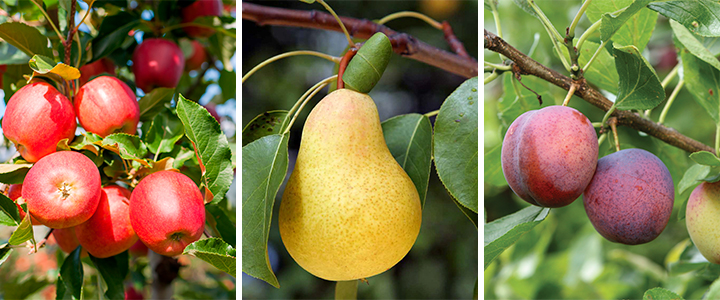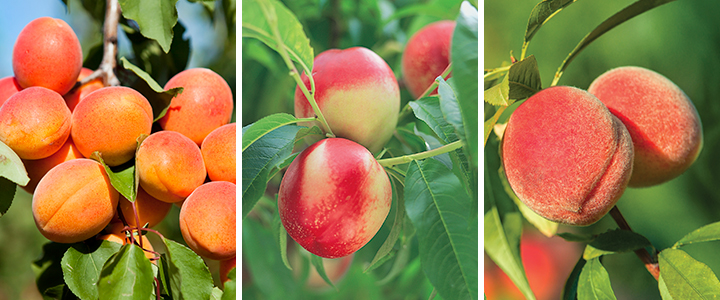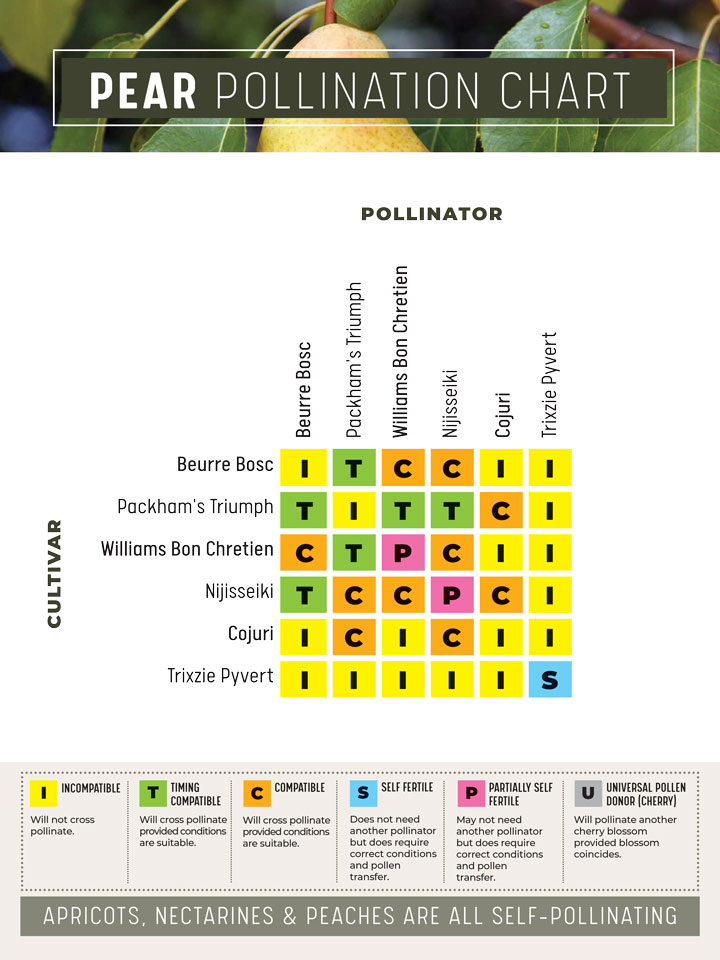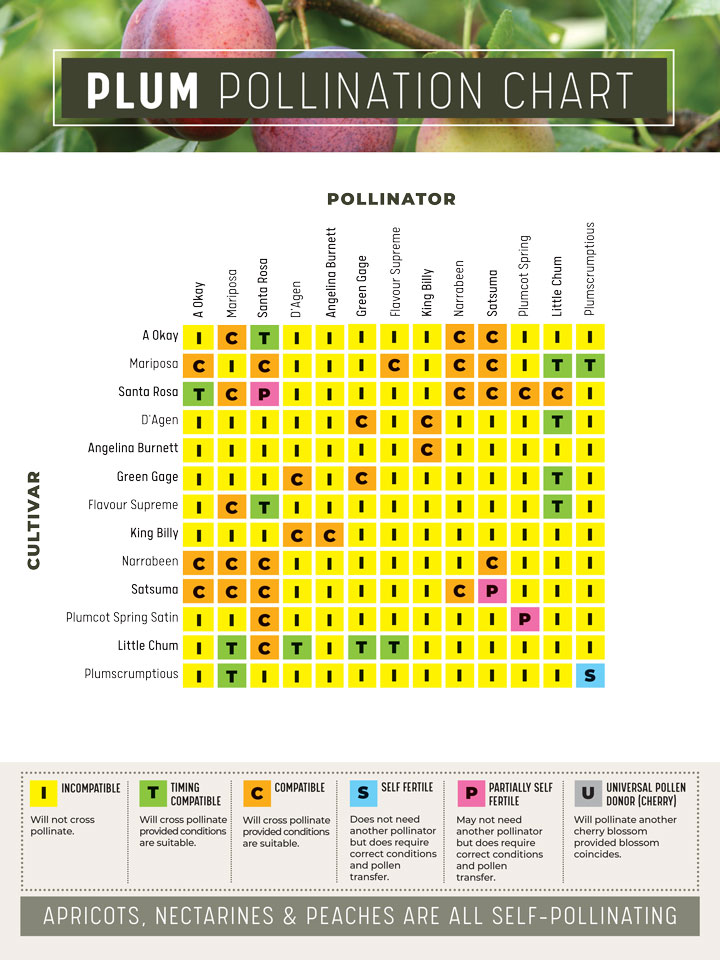Fruit tree pollination: what goes with what?
Looking at buying a fruit tree? It's one of the best moves you'll ever make. Not only will they eventually provide a bountiful harvest for your family, fruit trees also do a great environmental service by providing food and habitat for essential pollinators. In addition, they look stunning! But to make them as productive as possible, you need to know which varieties should be companion-planted, so your local bees, butterflies and birds can do their job of cross-pollinating. Here's your simple guide to fruit tree pollination.

Apples, pears, plums and cherries (header image) all require some degree of cross-pollination.
What is cross-pollinating?
Cross-pollinating is the process by which pollen is applied from the flowers of one plant to another. This can be done organically by pollinating insects as they feed, or through wind as it carries pollen particles from one tree to the next. It can also be done by hand, using a paintbrush to collect pollen from one flower and apply it to the next. Pollination is vital for fruit production on all plants, and some require cross-pollination specifically.
Why do some fruit trees require cross-pollination?
Cross-pollination, for certain fruit trees, is a requirement to produce a harvest. The reason for this is that some trees, such as most apples, have flowers which contain only stamens - that is, the "male" part of the flower; while others contain only "female" pistils. Without both elements existing on the same tree, these varieties cannot be self-fertile, therefore they rely on cross-pollination from compatible fruit varieties planted nearby to produce fruit. It's worth noting that not all varieties are compatible for cross-pollination - for example, not all apple varieties will effectively pollinate other apples. Other varieties will only effectively cross-pollinate if the timing and conditions are suitable.
Do all fruit trees need to be cross-pollinated?
While many fruit tree varieties benefit from some cross-pollination, others are known as "self-fertile" - meaning they don't require cross-pollination from a different variety to produce a harvest. They do, still, require pollination (that is, pollen moving from the stamens of one flower to the pistils of the next within the same variety, or from stamens to pistils in the same flower) in order to produce fruit. Self-fertile trees contain both the "male" and "female" parts of the flower, so are able to fertilise themselves. All varieties of apricot, nectarine and peach are self-fertile.

Apricots, nectarines and peaches are all self-pollinating, so do not need a compatible tree planted close by.
How do I cross-pollinate my fruit trees?
The best way to do this is to plant compatible varieties together in your garden and allow nature to take its course. Even better, if you underplant your fruit trees with other bee-attracting plants such as those mentioned in this article, you'll draw more pollinators to the exact location they're needed to encourage more natural cross-pollination. If you're really keen, you can manually assist pollination using a paintbrush.
I don't have room for multiple trees. Can I still grow fruit that requires cross-pollination?
Grafted fruit tree varieties can make the cross-pollination process easier when you have limited space. Flower Power sells a great range of double- and triple-grafted fruit trees (sold as 2 Way and 3 Way). These trees contain two or three different varieties of the same fruit grafted onto a rootstock plant. Often these varieties are all compatible pollinators, meaning you get the same effect as having two or three plants in the same space.
Which varieties are compatible?
Enter our fruit tree pollination charts. These handy little reference guides tell you exactly which plants are compatible, which ones are incompatible, which ones are timing compatible and which are self-fertile. Scroll down to find your variety on the left hand side of the relevant chart, then look across the row for all the info!
Fruit Tree Pollination Charts
Apple pollination chart

Pear pollination chart

Plum pollination chart

Cherry pollination chart


